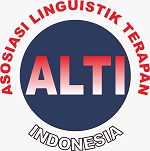Students’ Perception on Daring Learning while Quarantine: A Qualitative Case Study
DOI:
https://doi.org/10.33394/jollt.v8i3.2722Keywords:
Perception, Online LearningAbstract
References
Abbatt F, McMahon R. London: Macmillan; 1993. Teaching health care workers; pp. 15–21.
Burić, I., & Kim, L. E. (2020). Teacher self-efficacy, instructional quality, and student motivational beliefs: An analysis using multilevel structural equation modeling. Learning and Instruction, 66 (December 2019), 101302. https://doi.org/10.1016/j.learninstruc.2019.101302
Cummins, J. (1986). Empowering minority students: A framework for intervention. Harvard Educational Review, 56, 18-36.
Denzin, N. K., & Lincoln, Y. S. (2005). Introduction: The Discipline and Practice of Qualitative Research. In N. K. Denzin & Y. S. Lincoln (Eds.), The Sage handbook of qualitative research (p. 1–32). Sage Publications Ltd.
Haerazi, H., & Irawan, L. A. (2020). The effectiveness of ECOLA technique to improve reading comprehension in relation to motivation and self-efficacy. International Journal of Emerging Technologies in Learning (IJET), 15(01), pp. 61-76. doi: http://dx.doi.org/10.3991/ijet.v15i01.11495
Haerazi, H., Irawan, L. A., Suadiyatno, T., & Hidayatullah, H. (2020). Triggering preservice teachers’ writing skills through genre-based instructional model viewed from creativity. International Journal of Evaluation and Research in Education (IJERE), 9(1), 234-244 DOI: http://doi.org/10.11591/ijere.v9i1.20395
Hafner, K., & Lyon, M. (1996). Where wizards stay up late: The origins of the internet. New York, NY: Simon & Schuster.
Holshue M.L, DeBolt C, Lindquist S, Lofy KH, Wiesman J, Bruce H, et al. (2020). First case of 2019 novel coronavirus in the United States. N Engl J Med. https://doi.org/10.1056/NEJMoa2001191
Huang C, Wang Y, Li X, Ren L, Zhao J, Hu y, et al. Clinical features of patients infected with 2019 novel coronavirus in Wuhan, China.Lancet2020 https://doi.org/10.1016/S0140-6736(20)30183-5
Miles, M.B, and Huberman, A.M. (1994). Qualitative Data Analysis, 2nd Ed., p. 10-12. Newbury Park, CA: Sage.
Pitura, J., & Berlinska-Kopeć, M. (2018). Learning english while exploring the national cultural heritage: Technology-assisted project-based language learning in an upper-secondary school. Teaching English with Technology, 18(1), 37–52.
Retrieved from https://materisimulasidigitalkelasmaya.blogspot.com/2017/03/pengertian-komunikasi-dalam-jaringan.html
Retrieved from https://republika.co.id/berita/q7k1az318/belajar-secara-daring
second edition. [Google Scholar]
Shuell, T. J. (1996). Teaching and Learning in a Classroom Context. In D. C. Berliner, & R. C. Calfee (Eds.), Handbook of Educational Psychology (pp. 726-764). New York: Macmilan.
Vandenbroucke, L., Spilt, J., Verschueren, K., Piccinin, C., & Baeyens, D. (2018). The classroom as a developmental context for cognitive development: A meta-analysis on the importance of teacher–student interactions for children’s executive functions. Review of Educational Research, 88(1), 125–164. https://doi.org/10.3102/0034654317743200
Yulandari, E., & Rahman, A. (2019). Improving XI-grade students’ writing essay skill using computer edutainment. Journal of Languages and Language Teaching, 7(2), 96-107. doi:https://doi.org/10.33394/jollt.v7i2.1957
Warschauer, M. (1996). Computer-assisted language learning: An introduction. In S. Fotos (Ed.), Multimedia language teaching (pp. 3-20). Tokyo: Logos International. Cited in Al-Seghayer, K. (2001). The effect of multimedia annotation modes on L2 vocabulary acquisition: A comparative study. Language Learning and Technology, 5(1), 202-232.
Downloads
Published
How to Cite
Issue
Section
Citation Check
License
License and Publishing Agreement
In submitting the manuscript to the journal, the authors certify that:
- They are authorized by their co-authors to enter into these arrangements.
- The work described has not been formally published before, except in the form of an abstract or as part of a published lecture, review, thesis, or overlay journal.
- That it is not under consideration for publication elsewhere,
- That its publication has been approved by all the author(s) and by the responsible authorities – tacitly or explicitly – of the institutes where the work has been carried out.
- They secure the right to reproduce any material that has already been published or copyrighted elsewhere.
- They agree to the following license and publishing agreement.
Copyright
Authors who publish with JOLLT Journal of Languages and Language Teaching agree to the following terms:
- Authors retain copyright and grant the journal right of first publication with the work simultaneously licensed under a Creative Commons Attribution License (CC BY-SA 4.0) that allows others to share the work with an acknowledgment of the work's authorship and initial publication in this journal.Â
- Authors are able to enter into separate, additional contractual arrangements for the non-exclusive distribution of the journal's published version of the work (e.g., post it to an institutional repository or publish it in a book), with an acknowledgment of its initial publication in this journal.
- Authors are permitted and encouraged to post their work online (e.g., in institutional repositories or on their website) prior to and during the submission process, as it can lead to productive exchanges, as well as earlier and greater citation of published work.
Licensing for Data Publication
- Open Data Commons Attribution License, http://www.opendatacommons.org/licenses/by/1.0/ (default)
This work is licensed under a Creative Commons Attribution-ShareAlike 4.0 International License.
















